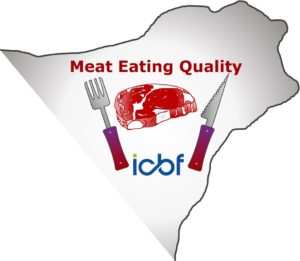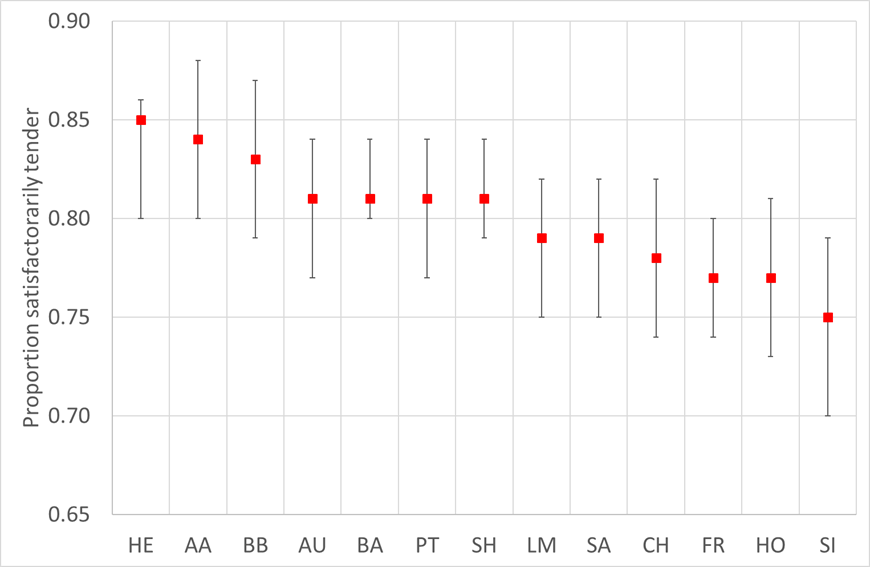View MEQ Genetic evaluations
Genetic evaluations for tenderness, juiciness and flavour for AI bulls
Why is meat eating quality important?
Consumer decisions to purchase beef is guided by a variety of sensory signs such as colour, appearance, tenderness, juiciness, and aroma or flavour. Recent UK retailer research has indicated that if a consumer has a negative experience eating beef, it will be six weeks before they purchase beef again. These results are against a backdrop of declining beef consumption within the EU, compared to pork and chicken alternatives. To address these trends, it is now critical to develop systems to help improve the eating quality attributes of beef for the traits that are of value to consumers, most notably tenderness, juiciness, and flavour.
Eating quality data
Accurate genetic evaluations for eating quality are centred on a large database of eating quality data in Ireland. Eating quality data now exists on tenderness, juiciness and flavour scores from trained sensory panelists on over 5,000 prime Irish beef cattle. Trained panelists are experts in quantifying the sensory characteristics of the steak, more so than the average consumer. All steaks originate from the same standard operating procedure at slaughter and sensory assessment. Forty-eight hours post-mortem, after hanging, striploin steaks are taken. All samples are aged for 21 days at 4°C before being held at -20°C prior to sensory analyses. Cooked steaks are cut into small portions and presented to each panellist while warm; several trained panelists score each steak. Each steak sample is scored for tenderness, juiciness and flavour on a 1 to 9 scale where a score of one represents very tough, not juicy and no beef flavour, respectively.
Genetic evaluations
Combined with pedigree and DNA information, along with other information such as animal gender and herd of origin, genetic evaluations for each of the three meat quality traits are generated. The resulting genetic evaluations are transformed to an expected satisfaction rating of the progeny from a given sire. The average expected rating for each trait is 80% (i.e., 80% of progeny are expected to have satisfactory tender, flavour or juicy score), with sires higher than this expected to produce progeny with superior meat eating quality for the relevant trait. The range in average satisfaction values across AI sires with published evaluations (September 2020) is 70% to 90%, with an average of 80%. While clear breed differences exist (Figure 1), of crucial importance is the variability in meat eating quality that exist within breeds.
Figure 1. Average (red dot with the minimum and maximum represented by the protruding vertical bars) tenderness genetic merit for AI bulls of different breeds with meat eating quality data on 20 or more progeny. Data based on the September 2020 evaluation.
Do the genetic evaluations work?
Forty heifers from a range of different beef breeds that were divergent on genetic merit for tenderness were identified on Irish farms and finished on a common diet at the Tully performance test station. Steak samples from all heifers were subjected to eating quality assessment using both trained panels (2 separate service providers) and consumer panels; a total of 140 Irish consumers of varying age groups, genders, occupations, and steak cooking preference were recruited. Despite not knowing the genetic origin of the meat samples, both the trained panels and consumer panels independently concluded that the meat from the animals predisposed genetically to have more tender meat, indeed had the more tender meat when consumed.
Key information:
- Meat eating quality evaluations were first published in September 2020 for beef AI bulls that meet three criteria: 1) they have some progeny with meat eating quality scores, 2) they have a minimum reliability of 10%, and 3) they are born after 1990. Over time, it is anticipated these criteria will be expanded to provide meat eating quality evaluations for additional animals.
- The meat eating quality evaluations are presented as stand-alone traits (i.e., they are not included in the Replacement, Terminal, or Dairy Beef Index). Work is on-going to potentially include these traits in the indexes in the future.
- The genetic evaluations are expressed as the expected satisfaction rating of the progeny from a given sire for tenderness, flavoursome, and juiciness; higher values are more desirable. For ease of interpretation, the traits are also expressed in star-units with five stars being most desirable.


